Breaking Beta | Does Strength Training Help Prevent Shoulder Injuries in Climbers?
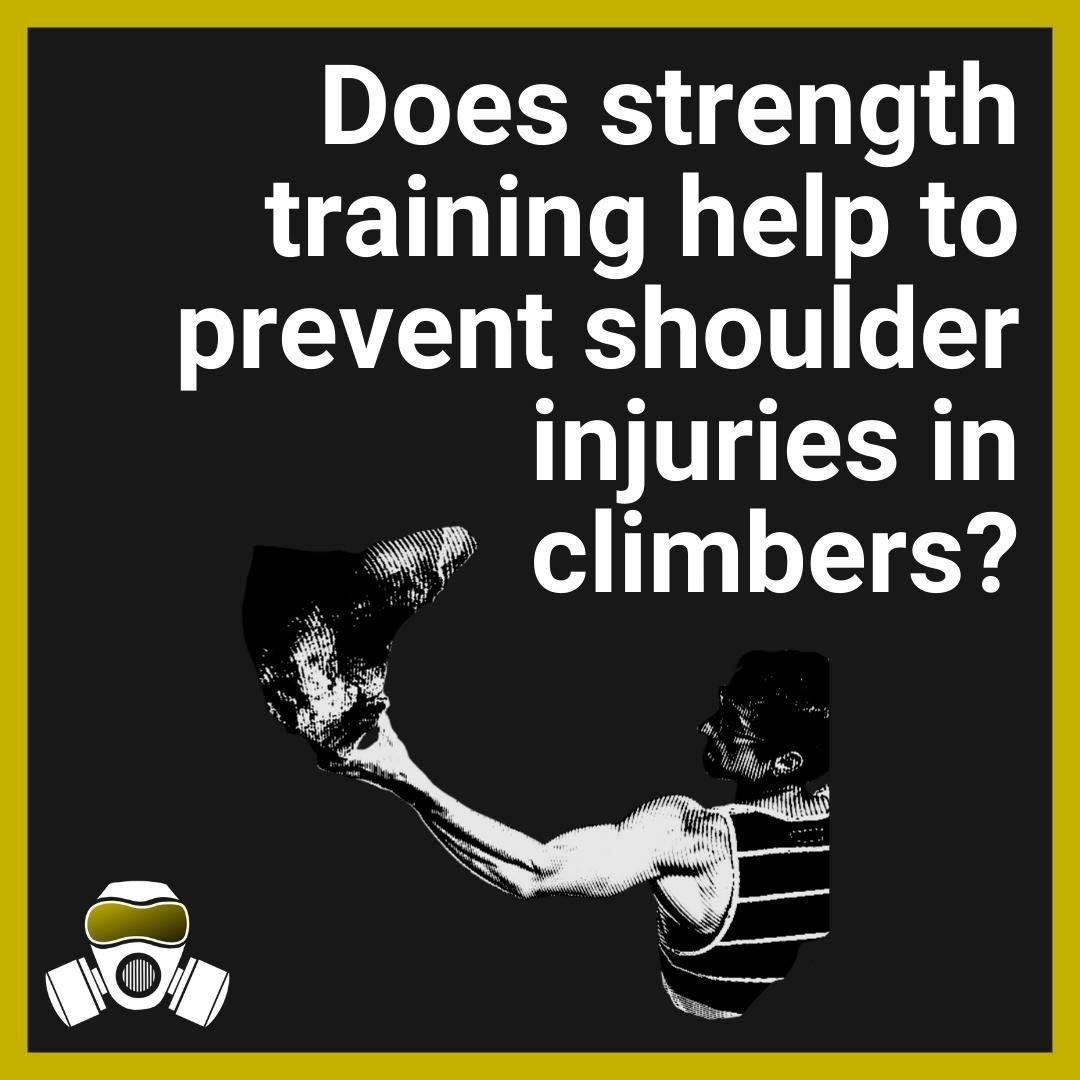
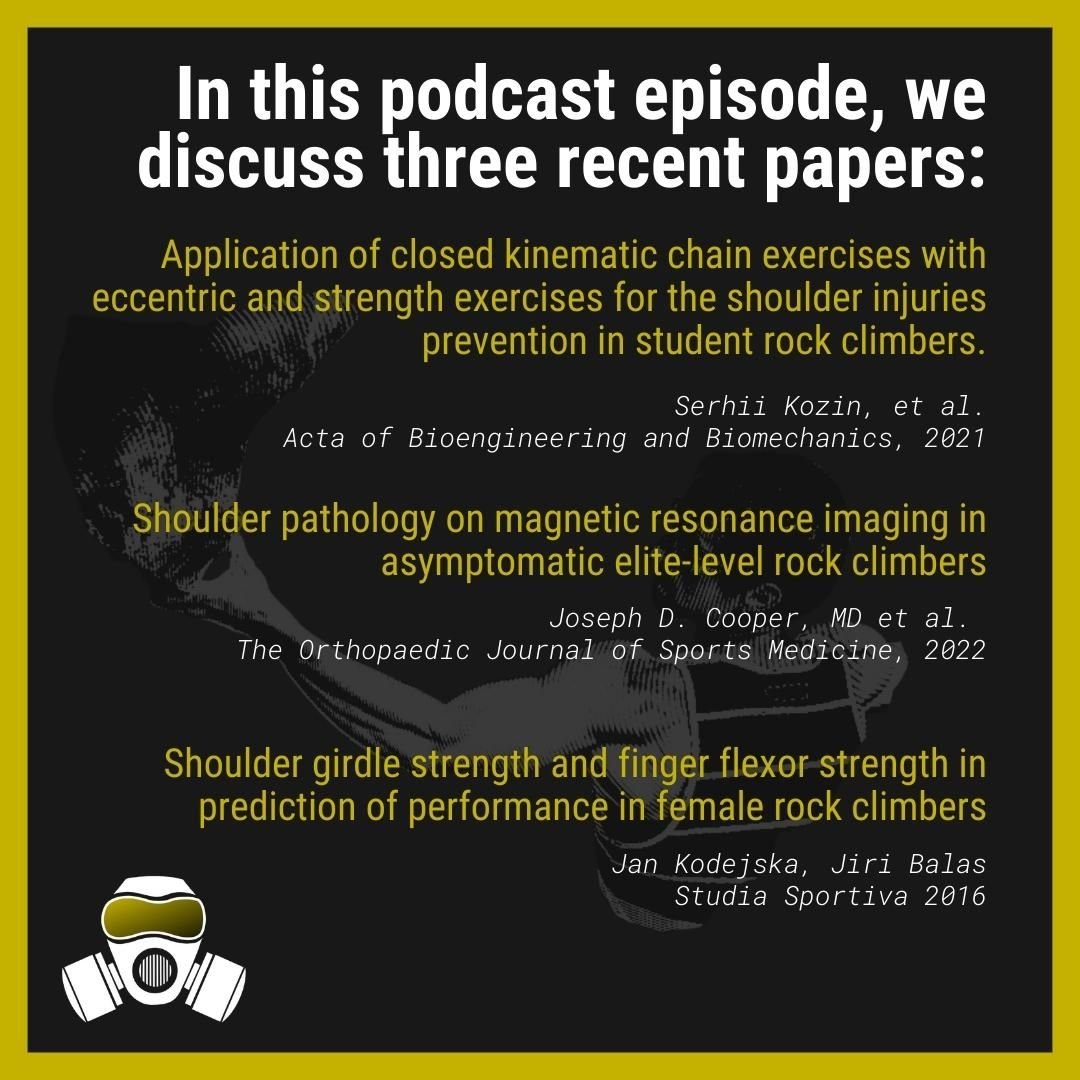


In this episode, Kris and Paul take a look at three papers dealing with the shoulder health of climbers:
Application of closed kinematic chain exercises with eccentric and strength exercises for the shoulder injuries prevention in student rock climbers: a randomized controlled trial
Authored by Serhii Kozin, Marian Cretu, Zhanneta Kozina, Andrii Chernozub, Olena Ryepko, Tetiana Shepelenko, Iryna Sobko, and Mariia Oleksiuk; published in the Acta of Bioengineering and Biomechanics in January, 2021.
&
Shoulder pathology on magnetic resonance imaging in asymptomatic elite-level rock climbers
Authored by Joseph D. Cooper, Max N. Seiter, Joseph J. Ruzbarsky, Ricky Poulton, Grant J. Dornan, Eric K. Fitzcharles, Charles P. Ho, and Thomas R. Hackett; published in The Orthopaedic Journal of Sports Medicine in February, 2022.
&
Shoulder girdle strength and finger flexor strength in prediction of performance in female rock climbers
Authored by Jan Kodejška and Jiří Baláš; published in Studia sportiva in 2016.
They’ll attempt to determine whether or not strength training really is a viable method for preventing shoulder injuries, and if shoulder health can be a reliable indicator of climbing performance in women.
New episodes of Breaking Beta drop on Wednesdays. Make sure you’re subscribed, leave us a review, and share!
And please, tell all of your friends who don’t have time to climb because they are doing dozens of wacky exercises with the 1 lb. dumbbells that you have the perfect podcast for them.
Got a question? Comments? Want to suggest a paper to be discussed? Get in touch and let us know!
Breaking Beta is brought to you by Power Company Climbing and Crux Conditioning, and is a proud member of the Plug Tone Audio Collective. Find full episode transcripts, citations, and more at our website.
FULL EPISODE TRANSCRIPT:
Kris Hampton 00:00
Hey everybody, Kris here. Just a quick heads up. In this episode we have some audio issues and by we I mean I apparently didn't have my mic hooked up correctly or my settings correct or the internet, as it sometimes does, didn't work perfectly. So maybe this will help you appreciate what good sound actually is. Alright, let's do it.
Kris Hampton 00:24
Season Two of Breaking Beta is brought to you by Gnarly Nutrition. After the episode use the code BETA15 for 15% off of your next order at gognarly.com or click the link in your show notes to have the code automatically applied. Gnarly Nutrition: Push your possible with science-backed, delicious sports nutrition.
Breaking Bad Audio Clip 00:50
Oh oh heavy lifting, I got it.
No, it's ok.
What do you got in there, cinder blocks?
I got it.
Half a million in cash.
.................hahahaha. That's the spirit, hahaha.
I got it. I got it. Haha oof.
Kris Hampton 01:21
No heavy lifting Paul. That's that's the advice. I know that you're doing a sport that asks you to get into really demanding, potentially compromised positions, especially for your shoulders that often require you to use extreme strength but for God's sake, no heavy lifting,
Paul Corsaro 01:38
It's dangerous. You'll just hurt yourself.
Kris Hampton 01:40
So dangerous. All right, we are sitting here today and discussing one main paper but we've also got a couple of others that we've looked at that I want to talk a little about. So the main paper that we're looking at today is "Application of closed kinematic chain exercises with eccentric and strength exercises for the shoulder injuries prevention in student rock climbers: a randomized controlled trial". I should have taken a bigger breath before I tried to read that
Paul Corsaro 02:10
Haha. This may be the longest title we've seen yet in the papers we've done.
Kris Hampton 02:15
Haha. One that I had to read multiple times to even understand. Authors are Serhii Kozin et al. Journal is Acta Bioengineering and Biomechanics 2021. And the purpose was to "determine the influence of a program containing exercise and a closed kinematic chain, eccentric and strength exercises on injuries of student rock climbers." The other papers we're going to be looking at and I don't know if I said this or not, 2021 is when that paper came out. But the other papers we're going to look at are "Shoulder pathology on magnetic resonance imaging in asymptomatic elite level rock climbers", Cooper et al, the Orthopedic Journal of Sports Medicine 2022, so new paper. Purpose was to "determine the prevalence of atypical findings on MRI of shoulders of asymptomatic elite level climbers and to evaluate the association of these findings with clinical examination results." And the study was done at the Steadman Clinic in Vail with fifty climbers, twenty-one of whom were women. And just a note here, the word "elite" used in the study meant 5.11 and up, so not the same as "elite" in the IRCRA guidelines. Which is a little frustrating to me that a paper can come out in 2022 from a clinic that, you know, is renowned and not actually look into the way that the Climbing Research Association is using these numbers.
Paul Corsaro 03:49
Yeah, moving forward we're going to need consistency, just like that's gonna make everything so much easier and just like be able to just interpret things a lot quicker if we can.
Kris Hampton 03:57
Yeah, totally.
Paul Corsaro 03:58
Yeah.
Kris Hampton 03:59
And the next study we'll be referring to here and there is a study that I actually really liked. It was done on twenty-one women, looking at some of the same IRCRA tests that we looked at recently and showed the power slap is a good predictor for women as well. So that power slap just keeps coming up. But it also included a novel, on the wall, lock off and diagonal reach test that the authors theorized showed static shoulder girdle strength. And that paper was titled "The strength of the shoulder girdle flexor in the prediction of women's climbing performance" by Jan Kodejška, I believe and Jiří Baláš. Sports Studies Journal 2016. Aim of that study was to clarify the relationship between the strength of the shoulder girdle and the flexors of the fingers and the climbing performance of sports climbers. That study I had to translate from Czech I believe and it the, you know, I some of the translation was questionable. The format was a little strange because of the translation, but overall I I kind of really liked that paper and it was really fun to see one that was all women.
Paul Corsaro 05:12
Yeah, I think that's you know, you don't see that often. So it's cool to, it's cool to look at it that way.
Kris Hampton 05:17
Yeah. And it was a really smart paper. So all right, let's get this thing going.
Breaking Bad Audio Clip 05:24
You clearly don't know who you're talking to, so let me clue you in.
Paul Corsaro 05:28
I'm Paul Corsaro.
Kris Hampton 05:30
I'm Kris Hampton.
Breaking Bad Audio Clip 05:31
Lucky two guys, but just guys, okay?
Paul Corsaro 05:35
And you're listening to Breaking Beta,
Kris Hampton 05:37
Where we explore and explain the science of climbing
Breaking Bad Audio Clip 05:41
With our skills, you'll earn more than you ever would on your own. We've got work to do. Are you ready?
Paul Corsaro 05:49
I am indeed ready. You?
Kris Hampton 05:51
You know, the new Kendrick Lamar album came out this morning. I listened to it. It got me a little hyped up and honestly, this paper has the most red highlights I've put in a paper in quite some time. So yeah, I'm ready man, haha.
Paul Corsaro 06:15
I interpreted "red" as in past tense of "read", but then and I was confused for a second.
Kris Hampton 06:20
Hahaha
Paul Corsaro 06:21
I was like, "Oh, really? We're gonna have a lot to maybe have to hash out here." But no, it's uh, I think we're on the same page here.
Kris Hampton 06:27
Yeah, actually, it's I guess it's a, like, bright, neon pink highlighter. But red, red just seems like a better term for "What the hell does this mean?", you know
Breaking Bad Audio Clip 06:39
What the hell is that supposed to mean?
Paul Corsaro 06:42
Yeah, there's a there's some interesting things going on in this one for sure.
Kris Hampton 06:46
Yeah, totally. And, you know, I think, before we even start, we're mainly looking at like I said, the the application of closed kinematic chain exercises on shoulder injury prevention. We're looking at that paper. I think it's asking a really important question, right? Many of the papers we've looked at this season and the previous season, mentioned shoulder endurance as a defining trait of the better climbers. And the paper from Kodejška that we had to translate finds that specifically in women, it's one of the best predictors. The Cooper paper on the MRI results shows that a pretty large percentage of climbers have some sort of pathology, which is as slippery of a word as injury seems to be, in their shoulders, ranging from tendinosis to tears. So how to keep the shoulders from getting injured and how to effectively strengthen them, I think are really good questions to be asking.
Paul Corsaro 07:47
Yeah, I think so too. And especially going back to the shoulder pathology study, I you know, as we refer to that, I think it's important to note that the that study was done on asymptomatic climbers. So these are people who came in, didn't report that they had any issues with their shoulders. They felt good, there was no pain. So you know, all the pathology that we mentioned in this study, like, it really didn't affect them, or they really didn't notice it at all. So just keep that in mind as we refer to that paper as well.
Kris Hampton 08:16
Yep, totally. You want to take us through the methods here? Yeah, let's do it.
Breaking Bad Audio Clip 08:21
In a scenario like this, I don't suppose it is bad form to just flip a coin.
Paul Corsaro 08:28
Alright. So for the closed chain, kinematic shoulder exercise paper, the researchers took 84 male students. Again, all male, no female, so you know, throw that asterisk in there.
Kris Hampton 08:40
This is this is a 2021 paper, right?
Paul Corsaro 08:43
Yep.
Kris Hampton 08:43
Yeah. Okay. Just checking.
Paul Corsaro 08:46
Yep. All age 18 to 19. They were engaged in rock climbing at an amateur level. Wasn't a whole lot of specifics about that, so I don't really know. I don't think we know what that means. But yeah, so amateur levels, I think if I look through it they're.... okay so they've been climbing on average for a little over two years, I would say, is what they said. But they took these 84 students, put them into two groups, a control group and an intervention group where they're actually doing the program proposed in the study. So for the control group, it ended up having 44 people in it, with the average time climbing of 2.4 years in the inter... intervention group. I'm sorry, I misinterpreted my abbreviations there. But the intervention group had 40 subjects in it with an average of about 2.2 years of rock climbing. And so for this paper, they looked at the six months prior to applying the intervention and had them report their shoulder injuries or issues they had so. And how they reported these injuries were you could either have a minor injury, which is an injury that healed in less than a month...in one month, a medium injury, which was an injury that had healed in two to three months and complex injuries that healed within six to 12 months. And, you know, I guess that's one way to describe those injuries.
Kris Hampton 10:07
Hahaha. I thought the same thing like, how are you going to determine the severity of an injury based on how quickly it heals, you know? Because if you're an idiot, and you just keep injuring it, it could heal in seven years, you have, you know,
Breaking Bad Audio Clip 10:22
What the hell is that supposed to mean?
Kris Hampton 10:24
I'm gonna be using that clip a lot, in this episode, haha.
Paul Corsaro 10:29
But, um, yeah, so they went into, so they looked at the six months prior to applying this protocol, and had the had the subjects report the, you know, the injuries, they had at various degrees of severity, before the protocol, and then they went into a year of applying this protocol to their training, which, you know, I think is pretty cool. That's a long time to keep things rolling. So what they did, both groups trained about three to four times a week. I think, over the term, the time of the, the entire year of applying this protocol, it was 150 sessions in each group. So cool, they kept that number pretty the same between two groups. So the control group didn't do anything before their climbing training session. Again, there wasn't a whole lot of specifics on what the specific actual climbing was in this paper.
Kris Hampton 11:22
Right. Right.
Paul Corsaro 11:22
Um, you know, I think they mentioned a couple times that they were the same. But yeah, again, we don't really know what they did there. But the in the intervention group, the intervention was a short battery of exercises that took about 15 minutes beforehand, that they did before their training, their climbing training session. And this consisted of TRX push ups and pull ups. They called it a couple of different things, so that's basically what they were, suspension, suspension rows and push ups, where they perform 10 to 20 reps, depending on the ability of the individual. Eccentric pronation, so where you're holding a dumbbell with the forearm supported, and you're gonna let that thumb turn inward and resist five to 10 reps, depending on the indi...... ability of the individual, and then pull ups, five to 20 reps, depending on the ability of the individual.
Kris Hampton 12:14
Yes
Paul Corsaro 12:14
I mean, you know, I think there could have been a bit more work done to standardize this some.
Kris Hampton 12:20
Hahaha
Paul Corsaro 12:22
And, you know, I had to like, question some things about what I thought I knew. And it turns out, I did know, but
Kris Hampton 12:30
About what a closed kinematic chain is?
Paul Corsaro 12:32
Yep, that's where I was going with that. I was like, "Ah, I don't really know if I would put suspension exercises or eccentric pronation exercises in the closed chain category"
Kris Hampton 12:42
Yeah. Same. Same. And I'll I'll say this again.
Breaking Bad Audio Clip 12:45
What the hell is that supposed to mean?
Kris Hampton 12:47
Yeah. I.... I'm not sure.
Paul Corsaro 12:49
Maybe translation but at the same time,like, you know, that's a pretty like, it's a pretty simple, like exercise science term. Like, you know, you learned that year one or even before, you know, so
Kris Hampton 13:01
Yeah
Paul Corsaro 13:01
So like, right away, like, you know, a lot of the stuff wasn't really closed kinematic chain in my book.
Kris Hampton 13:08
Yeah. And they, you know, to be fair, and I went down the same path that you did, and they do say, "closed kinematic chain strength exercises, and eccentric exercises", so I think it's kind of a one of each thing or something. You know, maybe the pull up is a closed kinematic chain?
Paul Corsaro 13:30
I see. Okay.
Kris Hampton 13:31
Because they're doing it on a bar. Maybe the eccentric pronation is the eccentric exercise, and the strength exercises are the push ups and the inverted rows? That's the best I can come up with.
Paul Corsaro 13:47
I guess my argument there would be like, I really wouldn't put like, basic TRX rows and push ups as like a pure strength exercise.
Kris Hampton 13:54
Same
Paul Corsaro 13:54
I think something needs to be overloaded a bit more. I think maybe that's what you're hinting at with your clip from the start of this podcast.
Kris Hampton 14:02
Yeah, exactly.
Paul Corsaro 14:04
But I think....and yeah, so you know, we I disagree with maybe the exercise selection, and, you know, some a lot of the specifics on how to standardize things and, you know, make this a bit more reportable. But, you know, I think the overall concept, it does make sense, though.
Kris Hampton 14:17
Yeah
Paul Corsaro 14:17
You know, let's take one group through, let's take these two groups through the same type of actual rock climbing, have one of them do an exercise protocol in the beginning and then so and then they would report over that year. Again, the injuries and the incidences of these injuries as well as the severity and they looked at, were there any differences between the number and severity of these injuries between two groups over that year?
Kris Hampton 14:42
Yeah, I mean, before we go to commercial here, I do have a real problem with the like, the way injuries were reported, you know. They were just just self reported, essentially, they were by the athletes, the coaches or the teachers. And like we talked about, the severity was determined by how long it took to completely recover from it. So if you have one person who's like, "Oh, this isn't so bad, I'll just climb through this" and another person who's like, "I can't climb anymore, I'm injured", you know, they could have the same injury. The person who keeps climbing could have a more "severe", air quotes, injury, but they're going to keep going. So I don't really know what injury means, in this case.
Paul Corsaro 15:28
And man, too, even outside of like, you know, the recovery and how they feel climbing, like, what are these people's routines like outside of actual training? How are they sleeping? How are they, you know, handling their nutrition? Because all of that has an effect on recovery, too, so, you know, it's gonna be really hard to control for that.
Kris Hampton 15:44
Yeah, totally. You know, we don't know what these people's jobs were, you know, we know that overhead jobs are just as big a contributor to shoulder injuries as overhead sports, so I'm not so sure that I like the way they're using the word injury here. But you know, it's it's science
Breaking Bad Audio Clip 16:02
Look it up, it's science!
Kris Hampton 16:05
And before, I think we're just both gonna go in on this paper, so maybe we take a commercial break, and we gather ourselves a little bit,
Breaking Bad Audio Clip 16:16
Please, I really need a break here, okay?
Kris Hampton 16:21
You know that time when conditions are perfect, just the right amount of chilly and crisply dry and you're totally focused on the project? You're climbing really well. It all feels amazing, right up until you're crashing, and you blow it after you got through the crux for the first time. Yeah, I used to be you. I'd forget to drink water and eat snacks. My energy would tank. I'd get hangry. I'd blame everything but myself. Well, not anymore. Gnarly Hydrate has the perfect amount of electrolytes, natural sugars, B vitamins, and deliciousness to help keep you going all day.
Breaking Bad Audio Clip 16:58
Yes, science!
Kris Hampton 16:59
Use code BETA15. That's B E T A one five for 15% off your next order at gognarly.com or click the link in the show notes to have the code automatically applied. Oh, and try the raspberry. You could thank me later.
Kris Hampton 17:14
Let's all get back to work for Christ's sake, okay
Kris Hampton 17:17
All right, we have returned. And we're going to be looking at the results of this paper. You've already heard Paul and I go in on it. The paaper we're looking at is "Application of closed kinematic chain exercises with eccentric and strength exercises for the shoulder injuries prevention in student rock climbers: a randomized controlled trial". Again, I should have taken a bigger breath. Let's let's look at the results
Kris Hampton 17:26
Just call it a randomized trial because I don't think it was really controlled that much
Kris Hampton 17:48
Hahaha.
Paul Corsaro 17:49
Not an RCT just an RT
Kris Hampton 17:51
Hahaha. This this clip is maybe the best use of of this clip for methods so far,
Breaking Bad Audio Clip 18:00
Whatever, whatever you think supposed to happen, I'm telling you the exact reverse opposite of that is gonna happen
Kris Hampton 18:08
Okay, so the results they they published in the paper look really simple. Due to their program, injuries were decreased. There were three in the experimental group or the control group...or three in the experimental or intervention group, and twenty-one in the control group. So if you just looking at the results, it looks great. Looks like okay, we do these exercises, we're going to reduce injuries. And actually, that may be the case, you know, I can't say that it's not per se. But this all hinges on what is meant by injuries and I just don't think they have a stringent enough definition here for me to take much away from it.
Paul Corsaro 18:49
Yeah, that's kind of I was kind of agreeing on the same boat. Like, you know, I just personally for me from my experience as a coach and all that, I believe that strength training can reduce the risk of having an injury.
Kris Hampton 19:02
Absolutely.
Paul Corsaro 19:04
But this isn't the paper I'm going to like pull out like, "Here! Look! This is what it says!", you know?
Kris Hampton 19:09
Haha. Yeah, I agree, man. You know, and the MRI, MRI paper from the Steadman Clinic, we see that what we call injury can also be totally asymptomatic, which is really just validating what we already know. I don't think there's a whole lot new there. You know, we've talked about it before. We talked about it in Season One. But it does raise some questions about the psychology of injury and how we refer to injury ourselves. That two people with the same MRI results can have radically different symptoms and is one an injury and the other not an injury? How do we define that? And I think this paper needed to define "injury", at least how they were looking at it, and they don't even do that, you know? I'm not saying they need to, they need to define "injury" for the rest of time, but for how they were determining what an "injury" was and wasn't, I think they needed to define that and I don't think they really did.
Paul Corsaro 20:13
Uh uh. And you know, without good clear definitions on those things, it's hard to make really, you know, emphatic, clear statements on things, you know.
Kris Hampton 20:23
Yeah, totally. They are also, you know, all about the closed kinematic chain here. They keep mentioning it, but there was there was no control group doing exercises that aren't in a closed kinematic chain, you know, that didn't include that. So, so it's tough for me to say "Closed kinematic chain is better than other exercises". I know there are some other papers showing that how important that is and I agree completely, but I don't think this paper really did...they didn't do much of what they said they were going to do, in my opinion.
Paul Corsaro 20:59
Yeah, like, I had to keep going back and like rereading the titles, like, "Did I miss something?", like, "Am I just misunderstanding?". But um, yeah, like, it just seems like they...haha....oh, man... it seems like you know, when you got to write a paper, and you need to hit a word count
Kris Hampton 21:16
Yeah!
Paul Corsaro 21:16
And they had like 80% of the word count in the title?
Paul Corsaro 21:20
Because maybe there wasn't a whole lot of content to really build on
Kris Hampton 21:20
Yeah
Kris Hampton 21:24
Yeah. You know what? When I first started reading this paper, Nate was sitting across from me. He was here recording some board meetings and I just pushed the paper in front of him and was like, "Read this paragraph and please try to explain to me what the hell they're talking about." And I'm gonna read the paragraph. This is in the introduction of the paper. The paragraph is: "Currently, there is also some controversy in the use of various means to improve the quality of climbing and the possible prevention of injury. Cetinkaya et al. found that modern tools used to improve the grip of fingers to rocks and rock climbing on natural terrain, chalk, degrade the condition of rocks. The authors recommended talking with climbers and motivating them to use other means. But other remedies are not popular with climbers and their effectiveness has not yet been proven. Therefore, the development of a special injuries prevention program and rock climbing is of particular importance."
Paul Corsaro 21:25
What the hell is that supposed to mean?
Kris Hampton 21:39
What?!
Paul Corsaro 21:39
What?!
Kris Hampton 21:40
What does chalk have to do...or whatever axe you have to grind with chalk here, have to do with injury prevention in rock climbing?
Paul Corsaro 22:40
Yeah, that's a little bit of a leap there, I would say.
Breaking Bad Audio Clip 22:44
What?
Paul Corsaro 22:45
Hahaha
Kris Hampton 22:46
I, I haven't the slightest clue what the hell they're talking about.
Paul Corsaro 22:51
Yeah. Yeah. Like, you know, stuff like that throughout, like the whole paper... just
Kris Hampton 22:55
Come on, man. They also mention in here, they keep saying that these exercises are specific to climbing. One of the novel things they do is use exercises that are specific to climbing. And again, that's just blurring the line too much for me. The way we use the word "specific" in this case, is a little bit appalling, I think.
Paul Corsaro 23:18
There were pushups, rows and pull ups. Like, I mean, I wouldn't say those are specific at all.
Kris Hampton 23:23
Yeah, the one thing they do that's specific to climbing, that I also found troublesome, is they keep making the statement that there is a correct technique for hanging onto a hold and an incorrect technique for hanging on to a hold.
Paul Corsaro 23:42
That's what I was gonna say next. I had that pulled up too. We're on the same page here. Haha
Kris Hampton 23:45
Yeah, they educated the people on what was "correct" and what was "incorrect". And
Paul Corsaro 23:52
Red flag
Kris Hampton 23:53
Essentially, it's just a, you know, locking your scapula down while you're hanging, not to hang disengaged, but instead to pull that scapula down and back, you know. And, personally, I'm a big fan of strengthening that scapular pull, that they call the "correct" technique, but not because it's correct. The reason I'm a big fan of strengthening it is because when you latch a hold at full extension, or you latch a hold as you're falling away, then in order to be the most effective for the next move, you need to first pull with that scapula, to begin that move...usually. It's not always the case, but as you get to harder and harder climbs, you're going to be latching at things....latching things at full extension. It's just a fact.
Kris Hampton 24:40
Right
Paul Corsaro 24:40
From a nonspecific view, just like from biomechanics, like to get overhead, that shoulder blade needs to rotate upward. There needs to be some expansion below the shoulder blade and expansion above to get there. And if all you're doing is compressing everything and driving that shoulder blade down and refusing to let it rotate up or get into that, and get into other positions like what happened like in higher climbing, like you said, when you do get in that position, and as inevitably you will, you're not prepared for that position.
Paul Corsaro 24:42
You know, things could happen.
Kris Hampton 25:00
Yeah, totally. You know, it's a movement we do regularly, so why not strengthen it? I'm a big fan of that, but to call it "correct" is just not supported. You know, we're constantly looking to primates in order to learn to move better as climbers. You know, I see that all the damn time. Find me a video of an orangutan swinging with a packed shoulder, or, or dropping off because his technique was incorrect. Find me that video. You're not going to.
Paul Corsaro 25:42
I'd like to see an orangutan do a drop knee. That'd be kinda cool.
Kris Hampton 25:50
Hahahaha. Hell yeah. What would you... because we're both just going to trash this paper, I think
Paul Corsaro 25:56
I mean, I don't..... at the same time, I don't want to feel like I'm completely trashing it, because I do
Kris Hampton 26:01
I'm fine with completely trashing it.
Paul Corsaro 26:03
I do, I do agree with what they say at the end. I just can't use how they got there as a good argument for that.
Kris Hampton 26:11
Yeah. Same
Paul Corsaro 26:11
Like, I don't think this backs up what they're saying, although I agree with what they're saying. But yeah, it's just like...this could have been done better.
Kris Hampton 26:19
Totally. I like that they are looking at this. I think it's an important question. I agree with what their suggestions are. I just don't think the paper really got us there.
Paul Corsaro 26:30
Yep
Kris Hampton 26:30
What would you rather see in a paper like this? If you if you got to design the study, what would you rather see?
Paul Corsaro 26:38
I would like to see, instead of trying to combine all of the exercises, I would like to see them focus on a couple of actual closed chain exercises. I'd like to see them loaded up and actually load things up. Like, you know, outside of people who are, you know, maybe earlier on in their strength training journey, or just strength development, I think it's really hard to use suspension systems to truly overload the body for strength.
Kris Hampton 27:02
Totally.
Paul Corsaro 27:02
So, so I'd like to see some, you know, more higher levels of loading in the movements. And you know, some more specifics with the injury, maybe like a pain scale, or, or I don't even know where you would go with that. That would have to require some, some thought. More than just a one off. But yeah, better definition and reporting of injury, a lot more on the front end for standardizing where people are coming from, what they're doing with their training and yeah, just better exercise selection.
Kris Hampton 27:33
Yeah, and I agree with that completely. I have those pretty much those exact same notes here. And I also think, maybe somebody doing it.... I mean, it's clear that the person who spearheaded the study is a climber. The, the figures of someone doing the exercises are actually of the author of the paper doing them. And it just occurs to me that maybe they are more interested in climbing than in research for climbing because they, you know, they didn't use any of the IRCRA guidelines. It's brand new paper. I would like to see this done by somebody who is actually tapped in to what other research is being done and essentially, what the guidelines are that have been put forth by this research association for climbers. And I'd also like to see someone who is really smart, way smarter than me, who can think outside the box, tackle this "correct technique" question that keeps popping up in random places. It's a slippery thing. And I'd like to see somebody really tackle that as well.
Paul Corsaro 28:48
Do you think we'll ever get a definitive answer there?
Kris Hampton 28:50
No, I don't. But I would like to hear the discourse on it, you know?
Paul Corsaro 28:57
Yeah
Kris Hampton 28:57
I'm a big fan of questioning assumptions, like I've mentioned before, and there are some people who are just like, "This is the correct technique. You're climbing with incorrect technique." and I'm like, "Wow, I, I don't believe there's such a thing, to be honest."
Paul Corsaro 29:14
Yeah
Kris Hampton 29:15
So, for me, this one was a big miss.
Paul Corsaro 29:20
Yep. Right there with you. Yeah, a couple good things I'd say about it, like I said, you know, I do agree with what they are saying. I think at a 3,000 mile view, I think the setup was interesting, where, you know, six months prior. record, you know, whatever we're looking at. I'm just gonna say it's extremely general, because I don't think the injury recording was useful that much, but whatever we're looking at, whatever metric we're looking at, let's look at it six months prior for both groups. Take it into a year of examining this, which I think is a good long time to look at something. Like I think you can get, you know, maybe some clear messaging out of that if you're looking at the right things. But yeah, six months prior, you know, split them into randomized groups where at the start of this intervention, the differences weren't really that significant. So you know, we were pretty much starting from even ground and then we had a year of looking at something. I think that setup was great. It's just, you know, the input into that system maybe wasn't.
Kris Hampton 30:17
Yeah, not quite stringent enough. Wasn't maybe wasn't completely thought through. So, glad they're doing it. I wish they would have done it better. I think that's where I stand here. And application wise, I'm taking nothing from this that I didn't already believe or didn't already do. I think common sense in this case, just common sense and studies from other sports trump this study for me.
Paul Corsaro 30:48
Yep, I'm right there with you. We're gonna keep strength training. We're gonna keep doing things. But it's not influenced by this paper.
Kris Hampton 30:54
Yep, totally. All right. That was easy.
Paul Corsaro 30:58
Haha. Yeah.
Kris Hampton 30:59
It's funny that we both come to the same conclusions here. You can find both Paul and I all over the internets by following the links right there in your show notes in your pocket supercomputers. And you can find Paul at his gym, Crux Conditioning in Chattanooga, Tennessee. If you have questions, comments, or papers you'd like for us to take a look at, hit us up at community.powercompanyclimbing.com. Don't forget to subscribe to the show. Leave us a review. And please tell all of your friends who don't have time to climb because they're doing dozens of wacky exercises with the one pound dumbbells that you have the perfect podcast for them. And we'll see you next week, when we discuss movement quality in sport climbing and whether or not we can effectively measure it.
Paul Corsaro 31:41
Thanks guys. We'll see you next time.
Breaking Bad Audio Clip 31:44
It's done.
Breaking Bad Audio Clip 31:45
You keep saying that and it's bullshit every time. Always. You know what? I'm done.
Breaking Bad Audio Clip 31:52
Okay, you and I were done.
Kris Hampton 31:56
Breaking Beta is brought to you by Power Company Climbing and Crux Conditioning and is a proud member of the Plug Tone Audio Collective. For transcripts, citations and more visit powercompanyclimbing.com/breakingbeta.
Breaking Bad Audio Clip 32:10
Let's not get lost in the who, what and whens. The point is we did our due diligence.
Kris Hampton 32:16
Our music, including our theme song Tumbleweed, is from legendary South Dakota band Riff Lord.
Breaking Bad Audio Clip 32:22
This is it. This is how it ends.





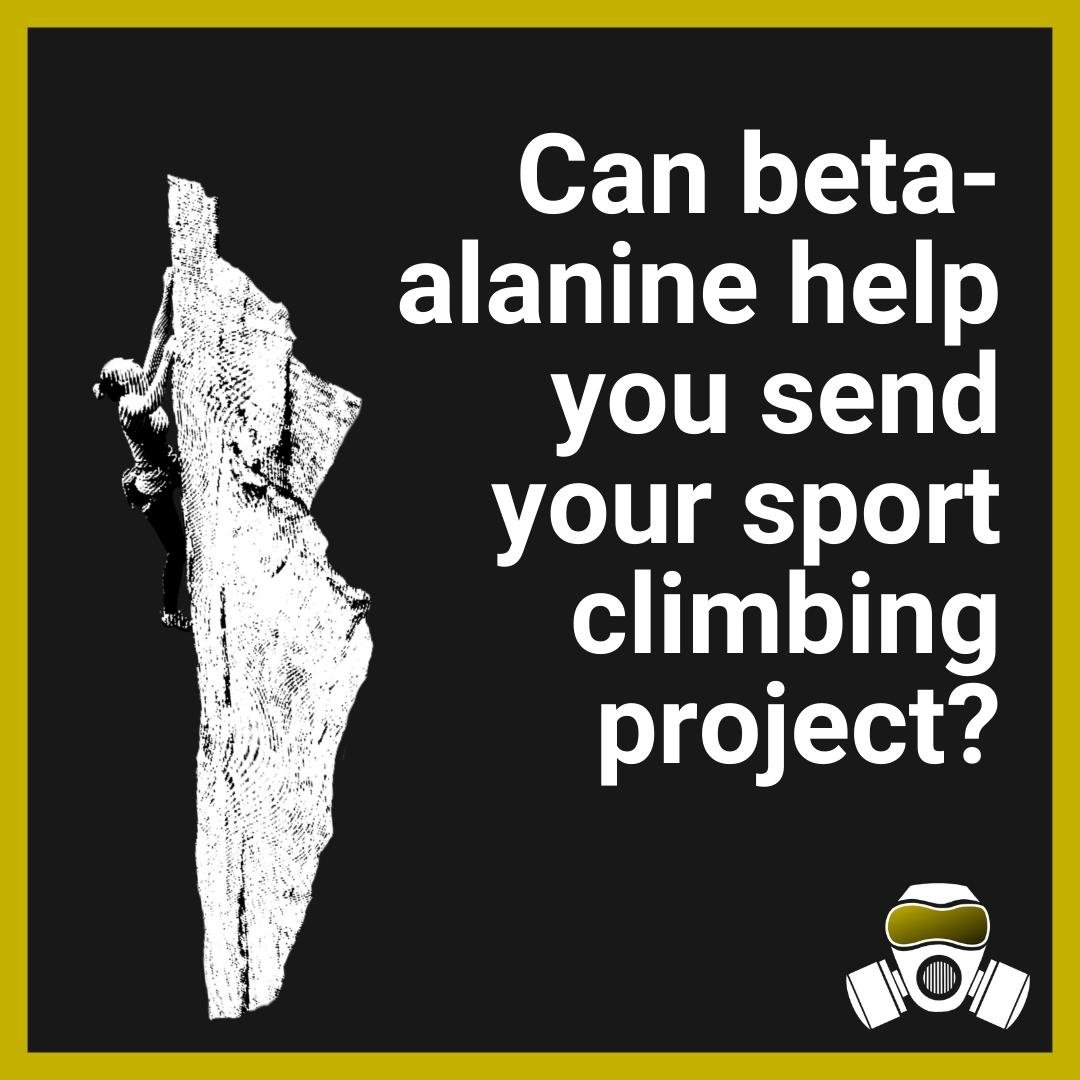

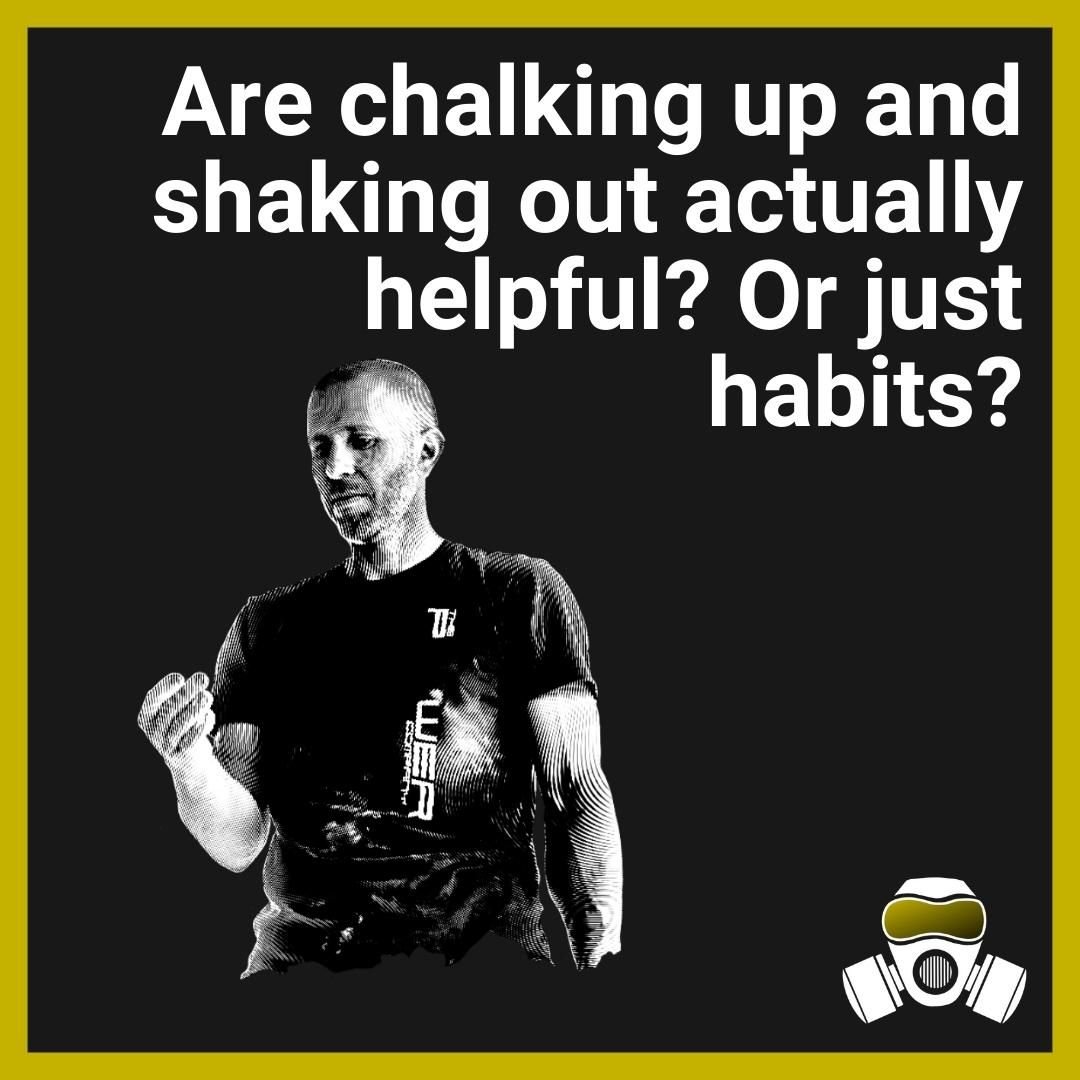



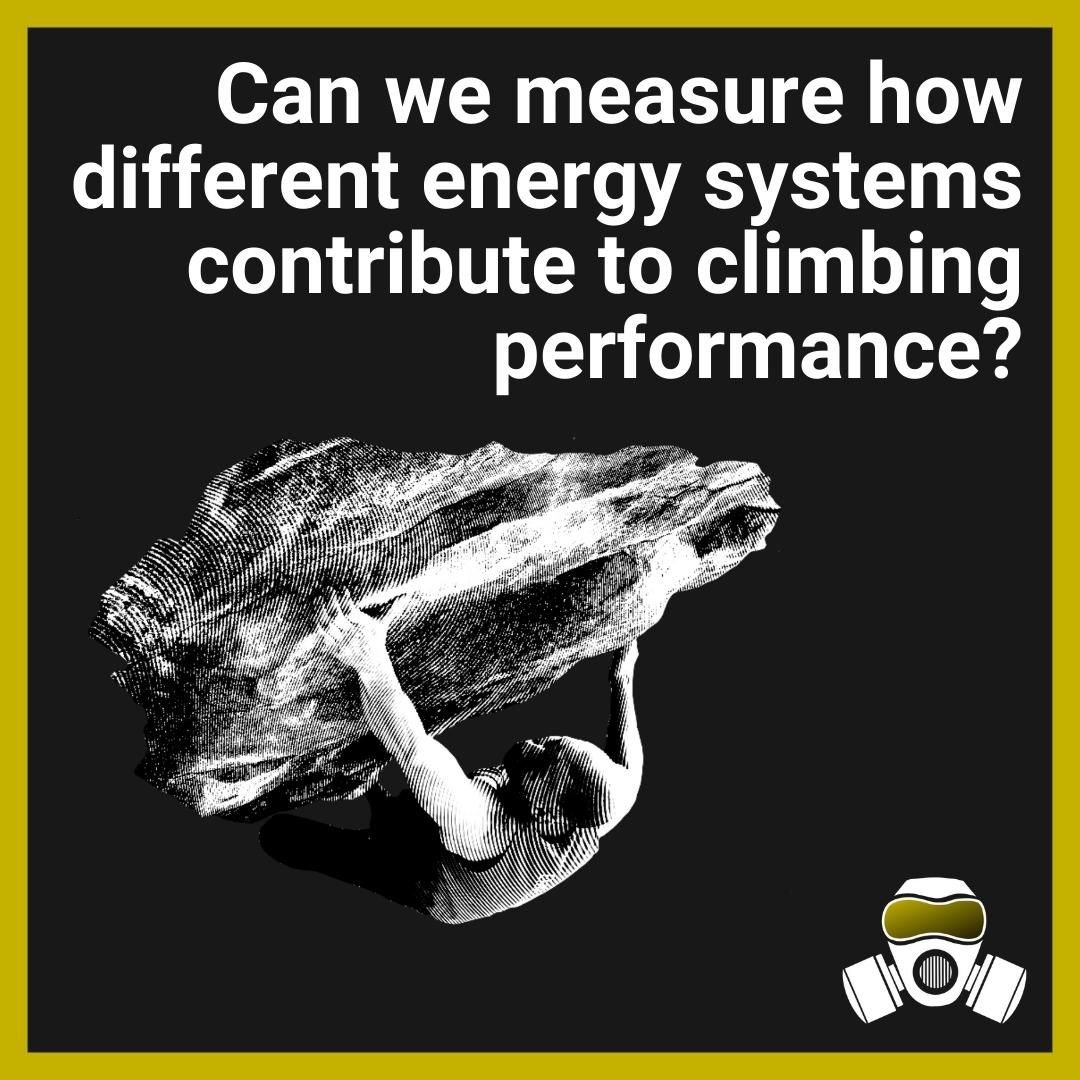
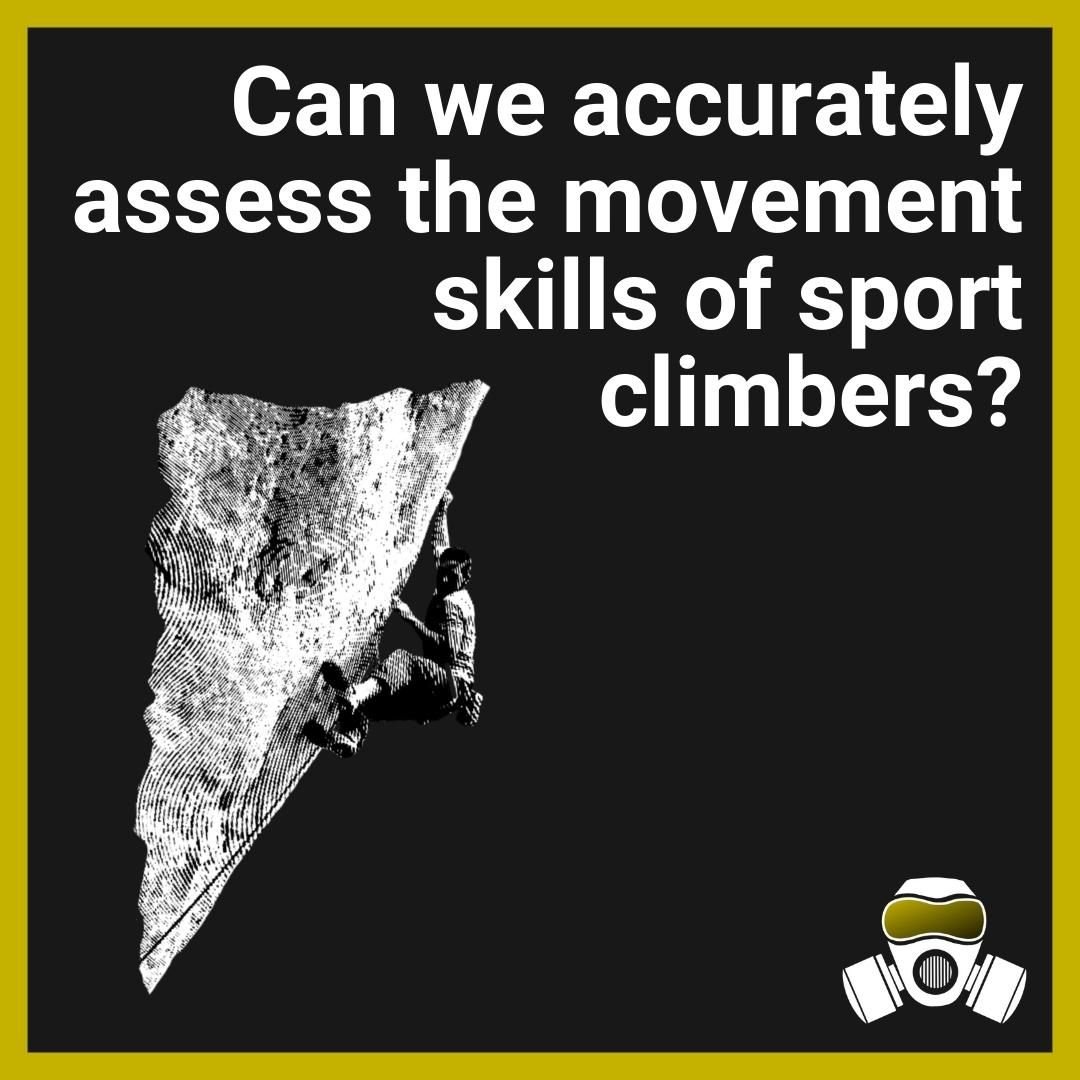











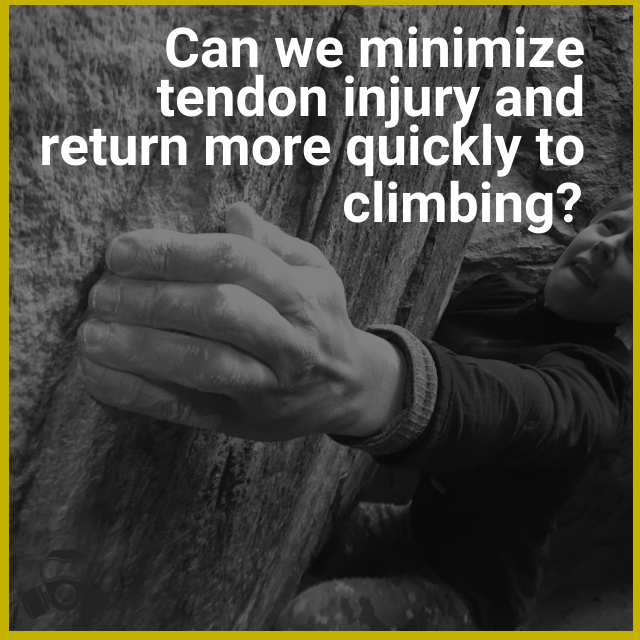
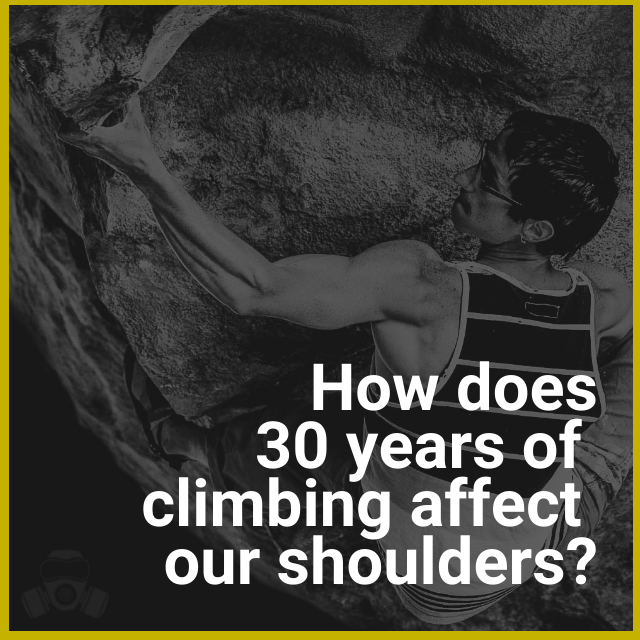

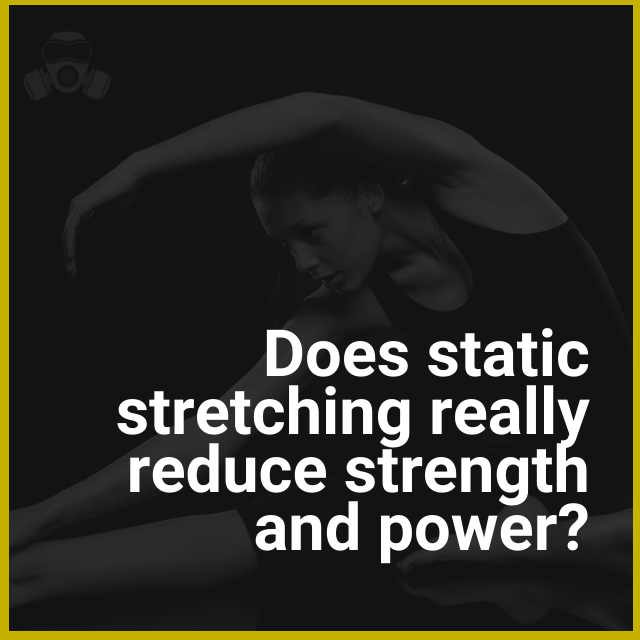



Kris and Paul dig into a paper that presents and then tests a method for measuring movement skills in sport climbing.